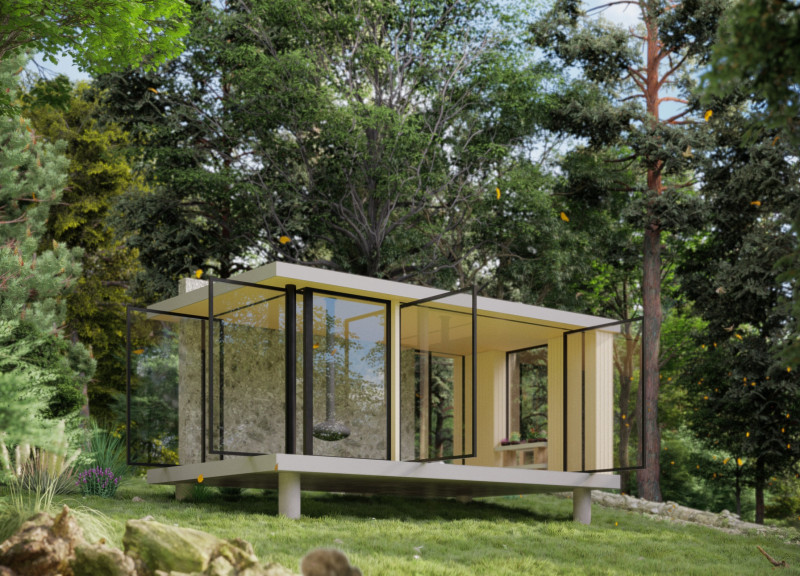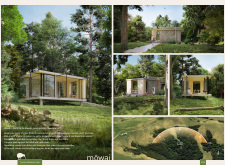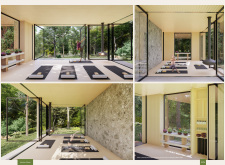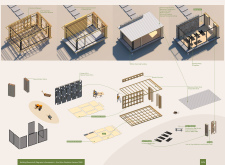5 key facts about this project
The Tiny Kiwi Meditation Cabin is situated in a peaceful natural environment, designed to support meditation and self-reflection. The project aims to create a strong connection between the structure and its surroundings, focusing on the idea of **mōwai**, which represents calmness and solitude. It acts as a retreat for individuals, emphasizing introspection and a deeper connection with nature.
Orientation and Light
The cabin is positioned to capture the morning light, with the altar located on the East facade. This choice allows sunlight to enter the space in the early hours, which enhances the meditative experience. The relationship between light and personal reflection is a key theme in the design, bringing warmth and a sense of renewal to the occupants.
Materiality and Aesthetics
The materials selected for the cabin play an important role in its overall look and function. Structural plywood and cedar siding are used throughout, creating a natural feel that blends with the environment. Additionally, cast-in-place concrete or ceramic tile and natural stone add durability and help regulate temperature. Together, these materials create a cohesive atmosphere that is both inviting and practical.
Spatial Layout
Inside the cabin, the layout is straightforward and purposeful. Areas are designated for yoga and meditation, with mats stored conveniently for easy use. A fireplace adds warmth, allowing the cabin to be comfortable year-round. The design encourages reflection and mindfulness, making it a versatile space for various introspective activities.
The design effectively connects the interior with the natural landscape, with large windows and openings that invite the outside in. This thoughtful arrangement fosters an environment where occupants can enjoy solitude and peace, reinforcing the overall goal of creating a retreat in nature. The attention to detail creates a space that naturally encourages contemplation and personal growth.






















































